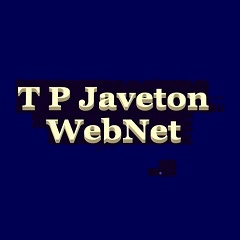Focusing on career objective
Resume writers of all calibers will probably agree that the most difficult and time consuming section of any resume is the listing of their work experience, regardless of the level reached in their professional career. That having been said, there are steps that can be taken to make such a listing more interesting, if not less difficult and time consuming; and the first and most important step requires the writer to focus on his/her career objective, and prioritize work in accordance with the goals s/he has previously set.
If you are preparing a resume and want it to best represent you, it is of significant importance that your professional experience not only showcase the activities in which you have participated while in your previous jobs, but it must demonstrate your qualifications in the way that motivates employers to want to know more. Of course, what is being referred to here are results: any tangible, measurable items that have, and will continue to, impact the bottom line must be conveyed in your well-written resume.
Let potential employers know:
- That your project came in under budget;
- That you adhered to the timeline;
- That you acquired X number of new customers, and…
- That you increased sales by a double-digit percentage; plus any other positive results.
Quantify with numbers and specifics
Approach your resume preparation with the thought in mind that employers can wrap their minds around numbers, because they work with them on a daily basis; and using this approach you want to let your potential employers know that you can think in the same way as they do, and that you take results into serious consideration as you perform your job on day-to-day basis.
functional and chronological resumes
To get started with your work history, you should begin each description with a power word; such as managed, developed, communicated, etc. And do some research on the use of power words and phrases that are appropriate for your industry. Make sure also, that the statements you list first under your job responsibilities quantify your achievements and don’t be afraid to list sales figures, customer acquisition rates, budget and timeline successes, or any other figures which help put your responsibilities in the context of your business and/or field.
It is important that you be specific, because the only way your statements would truly be quantified is if you include numbers. In other words, saying that you acquired new customers is significantly different from saying that you increased the customer database by 10%. As mentioned above, this is the most critical aspect of listing past job descriptions on your resume. Your potential employer wants to know what you did, as well as how proficient you were at doing it.
Convey achievement and make a great impression!
All these statements should be aligned with your career objective you included at the top of the resume. For example, if you want to get a job in project management, letting your employer know that you managed a team of 20 people and the overall results you achieved will effectively highlight your qualifications. It is important to quantify your job description statements on your resume; however, as a word of caution, do not quantify all statements, just one or two that are most critical to your job and are goal driven.
about resumes, cover letters and interviews< /p>
Doing so will show potential employers that you think in terms of exceeding your goals; and all subsequent descriptions of your responsibilities should support the first one or two items on your list. Be sure to put yourself in the shoes of your employer. Cross-check the job description and make sure that you address the qualifications required for the particular job with qualifiying information on your resume. Let your potential employer know that you have what they are looking for, and you will certainly make a great impression.

